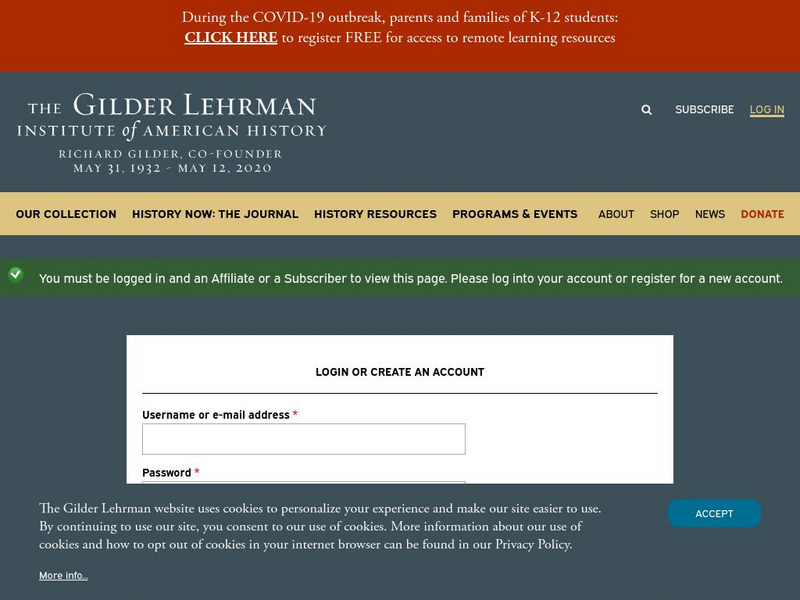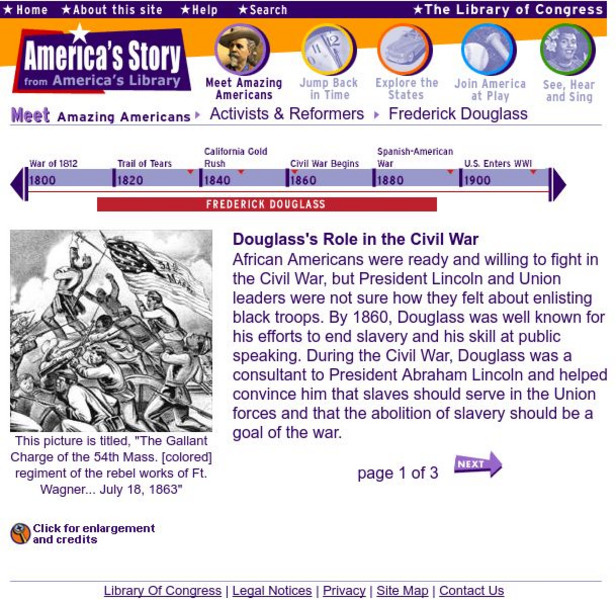Curated OER
Frederick Douglass, Narrative of the Life of Frederick Douglass an American Slave, Written by Himself
Foster reader confidence when encountering complex text and reinforce the skills readers have acquired to build and extend their understanding of text. The plan uses a section of Douglass’ narrative as an exemplar text. Directions for...
Center for History Education
Did Southern Free Men of Color Fight for the Ideals of the South?
Much of history is distasteful. Primary sources often reveal attitudes acceptable at the time that no longer are. But to understand controversial historical events, historians must examine primary sources that represent a wide variety of...
National Woman's History Museum
Seneca Falls and Suffrage: Teaching Women's History with Comics
As part of the study of women's history, young scholars examine Chester Comix's strips about the Seneca Falls Convention and four 19th century leaders in the struggle for equal rights. After researching other elements of the Suffrage...
Gilder Lehrman Institute of American History
Slave Narratives: Frederick Douglass, Harriet Jacobs, and the Columbian Orator
Young historians practice in-depth, quality analysis of primary source texts in this three-lesson unit, which examines excerpts from the slave narratives of Frederick Douglass, Harriet Jacobs, and Caleb...
Humanities Texas
Primary Source Worksheet: Frederick Douglass, “Expression of Gratitude for Freedom”
Here is a fantastic primary source analysis activity regarding Frederick Douglass' speech delivered at the unveiling of the Freedmen's Monument in 1876. The follow-up discussion questions and activities highlight Douglass' discussion of...
Curated OER
Reading Comprehension: Frederick Douglass
In this history worksheet, students read a one page biography about Frederick Douglass. Students then answer 15 short essay questions about the text.
National Endowment for the Humanities
From Courage to Freedom: The Reality behind the Song
Students study how Frederick Douglass uses language to describe a realistic picture of slavery in his writings which are primary source documents. They examine his use of word choice, imagery, irony, and rhetorical appeals and use slave...
Curated OER
Literature for Lesson 4 - Abolitionists
Students examine the definition of abolition and abolitionists. In this abolition instructional activity, students complete vocabulary work before reading about Harriet Tubman, Sojourner Truth, and Frederick Douglass. They watch a video...
Gilder Lehrman Institute of American History
Gilder Lehrman Institute: History by Era: Slavery and Anti Slavery
[Free Registration/Login Required] An excellent essay explaining the roots of the anit-slavery movement in the United States in the early 1830s and its evolution over the next twenty-five years. Read about the abolitionists, both white...
Digital History
Digital History: Three Responses to Slavery [Pdf]
This site looks at how slaves Josiah Henson, Frederick Douglass and Sojourner Truth each responded to slavery in unique ways. Read their own words.
Library of Congress
Loc: America's Story: Frederick Douglass' Role in the Civil War
Frederick Douglass had the ear of Abraham Lincoln. Read about how he used his influence to allow African Americans to join the Union Army,











![Digital History: Three Responses to Slavery [Pdf] Website Digital History: Three Responses to Slavery [Pdf] Website](https://static.lp.lexp.cloud/images/attachment_defaults/resource/large/FPO-knovation.png)
